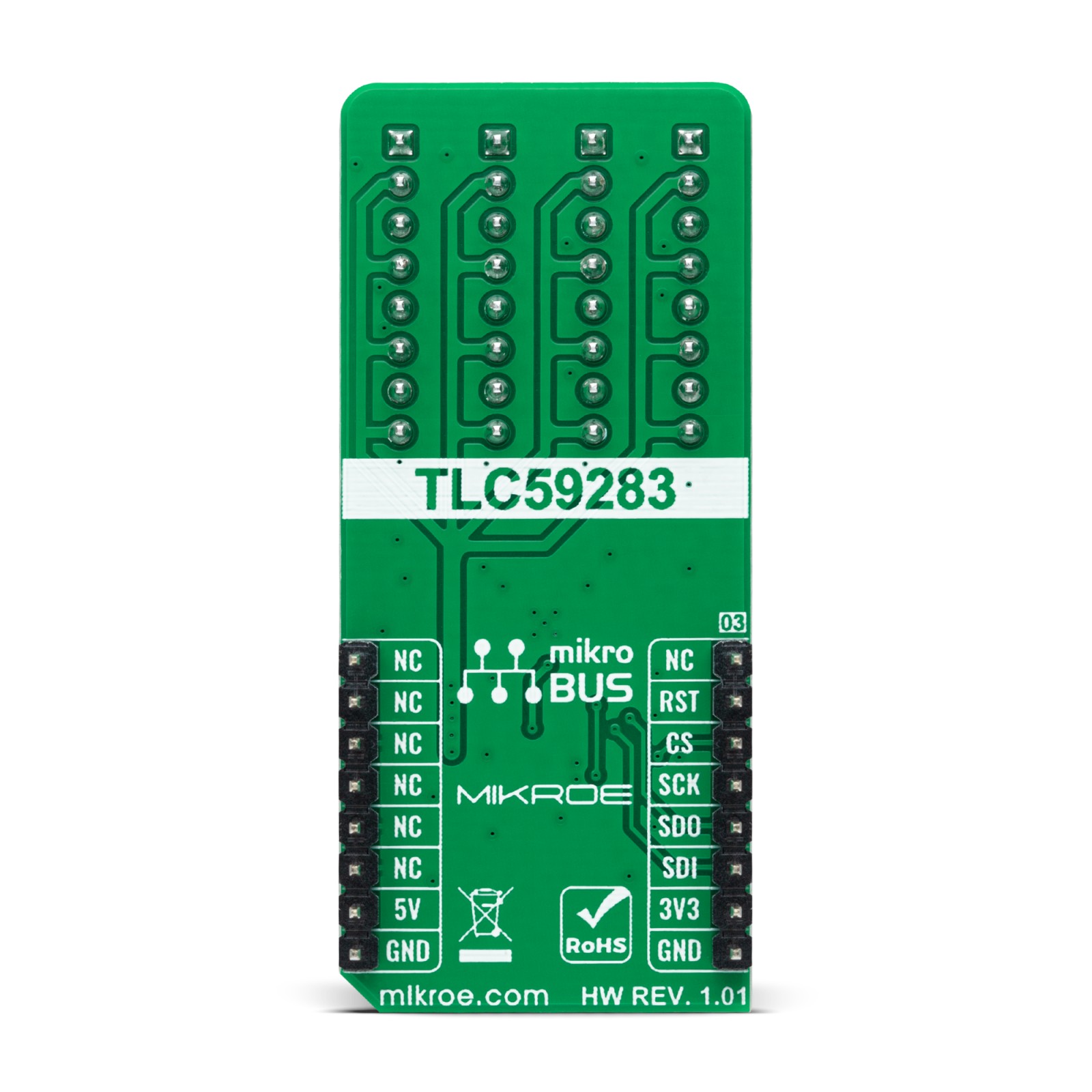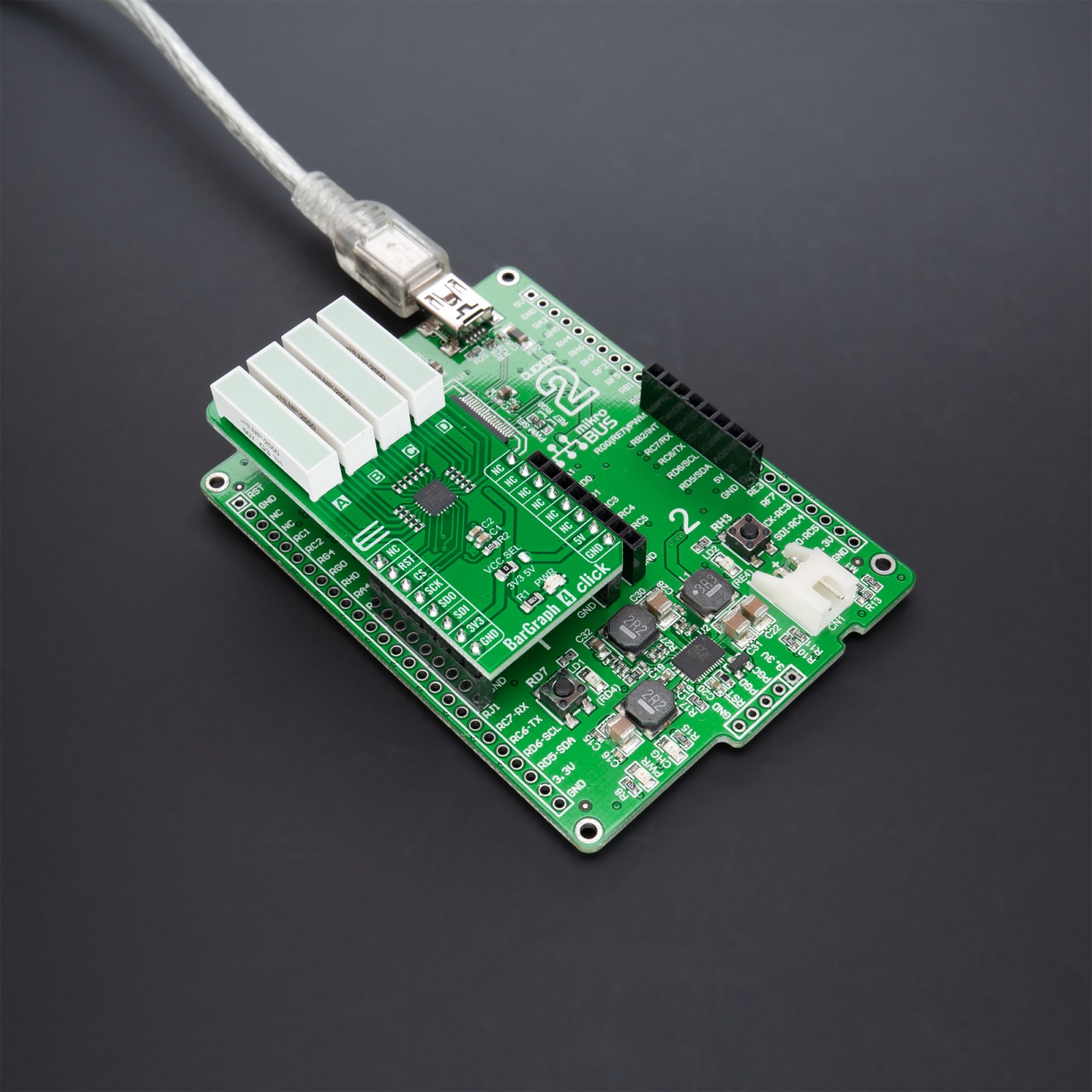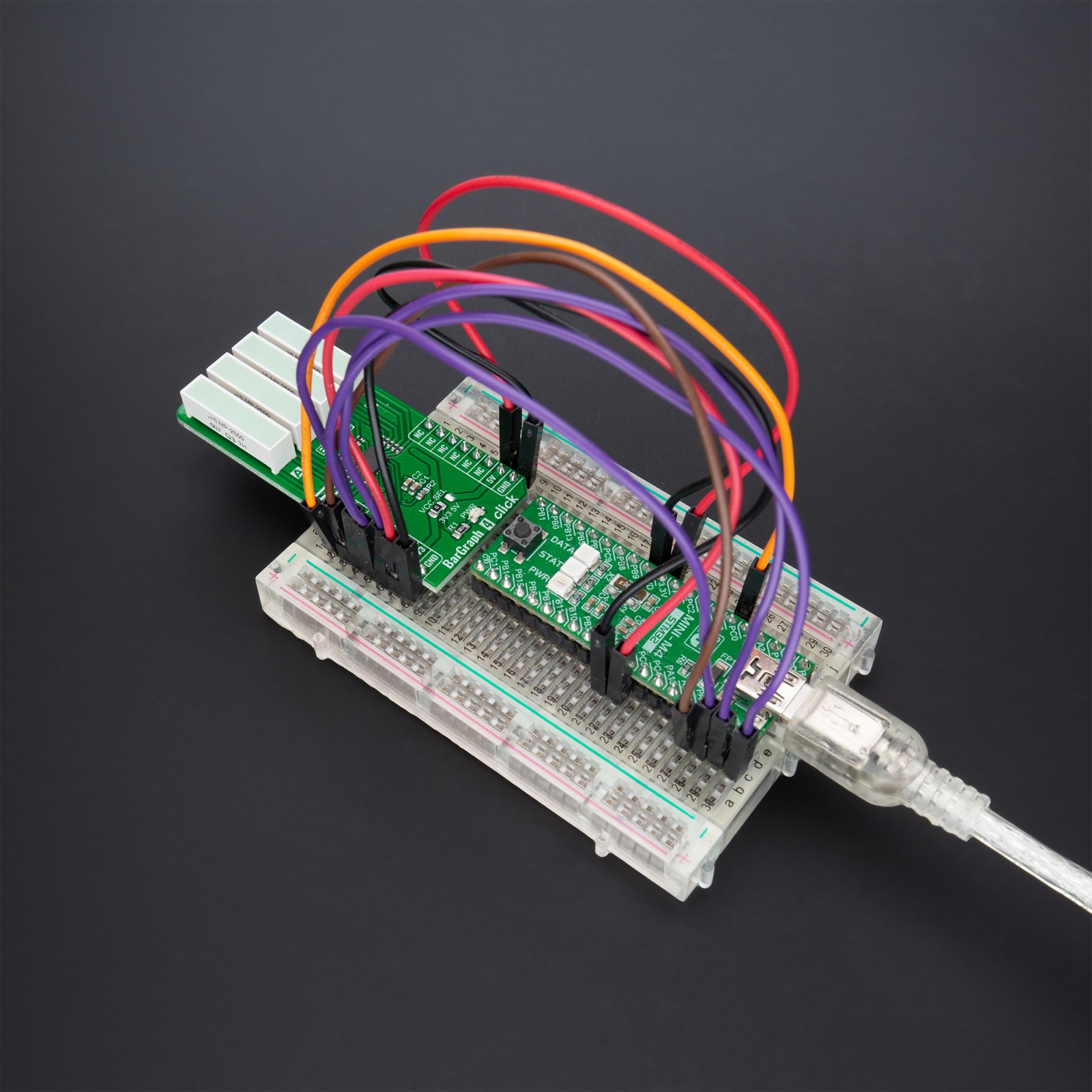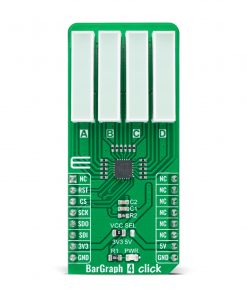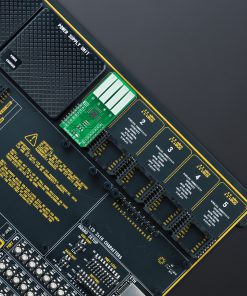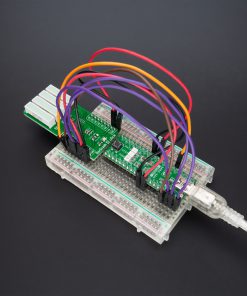BarGraph 4 Click
R755.00 ex. VAT
BarGraph 4 Click is a compact add-on board that contains four green four-segment LED bar graph displays. This board features the TLC59283, a 16-channel, constant-current sink light-emitting diode (LED) driver from Texas Instruments. Depending on the operating VCC, each channel can be individually controlled with a simple SPI serial communications protocol compatible with 3.3V or 5V logic levels. It also comes with a constant-current value of all 16 channels set by a single resistor and one GPIO pin used to turn off all outputs during Power-On and output data latching to prevent unwanted image displays during these times. This Click board™ is suitable for creating various types of VU meters, status indicators, different types of counters, and similar devices.
BarGraph 4 Click is supported by a mikroSDK compliant library, which includes functions that simplify software development. This Click board™ comes as a fully tested product, ready to be used on a system equipped with the mikroBUS™ socket.
Stock: Lead-time applicable.
| 5+ | R717.25 |
| 10+ | R679.50 |
| 15+ | R641.75 |
| 20+ | R617.59 |



